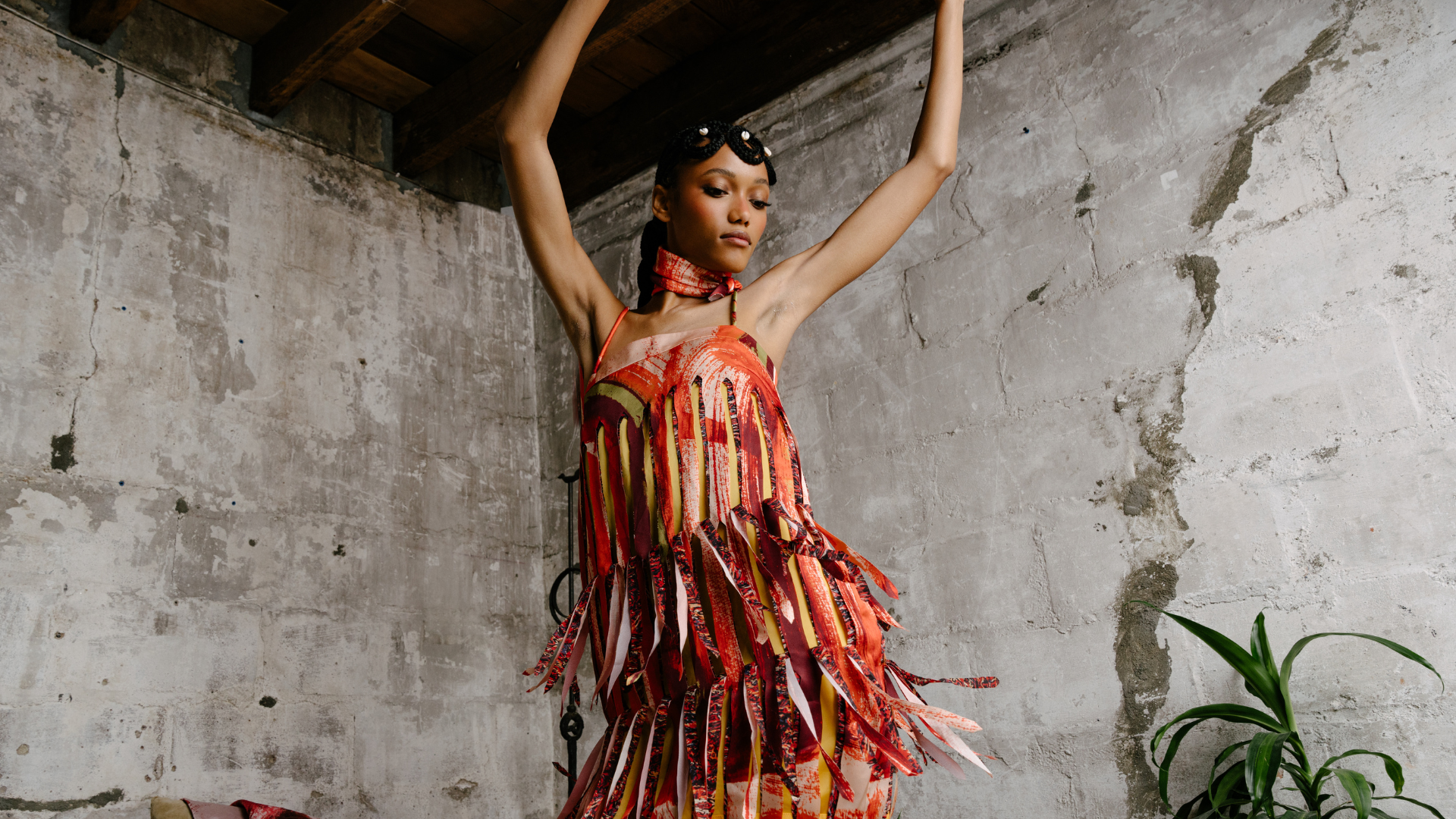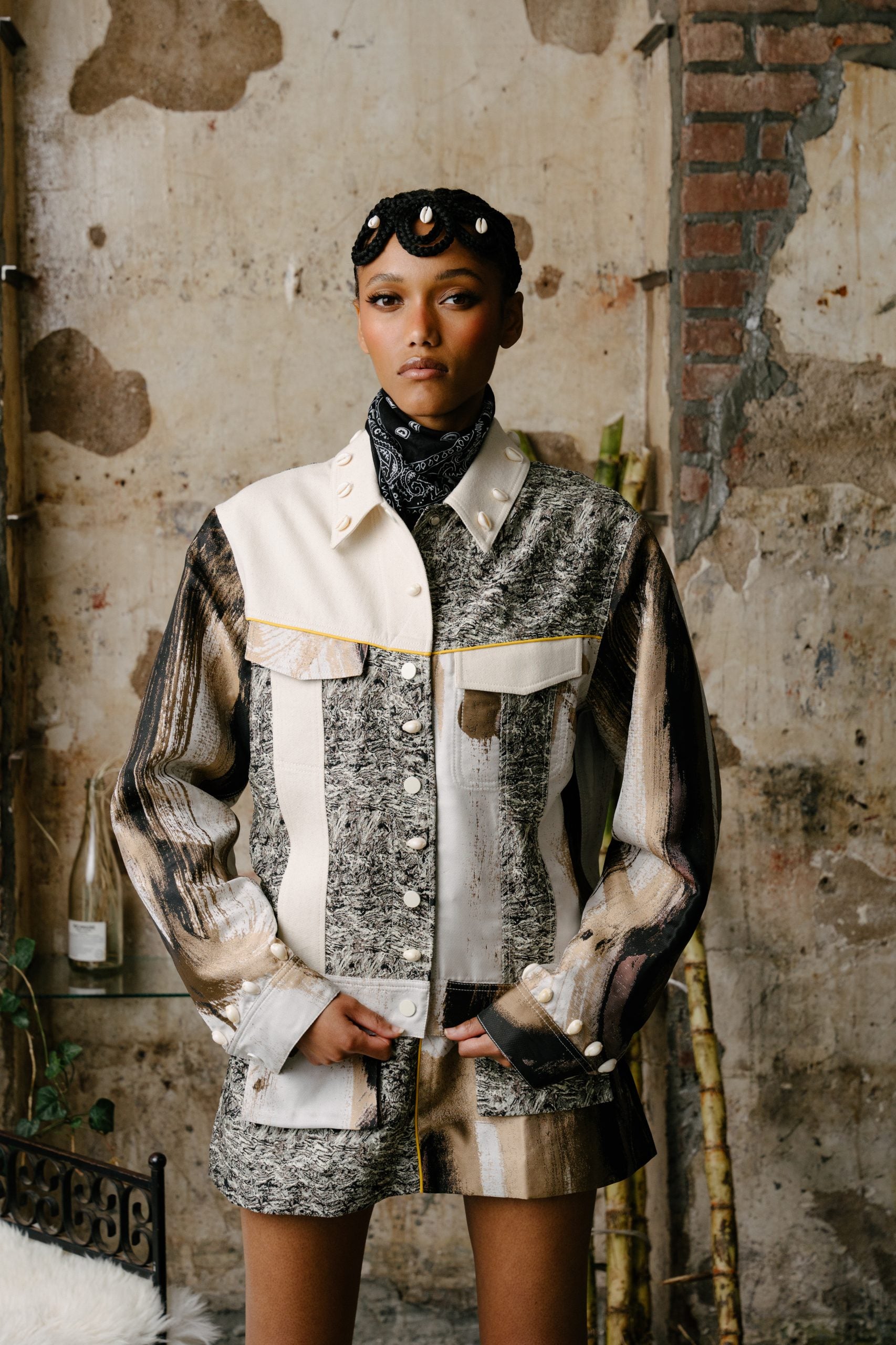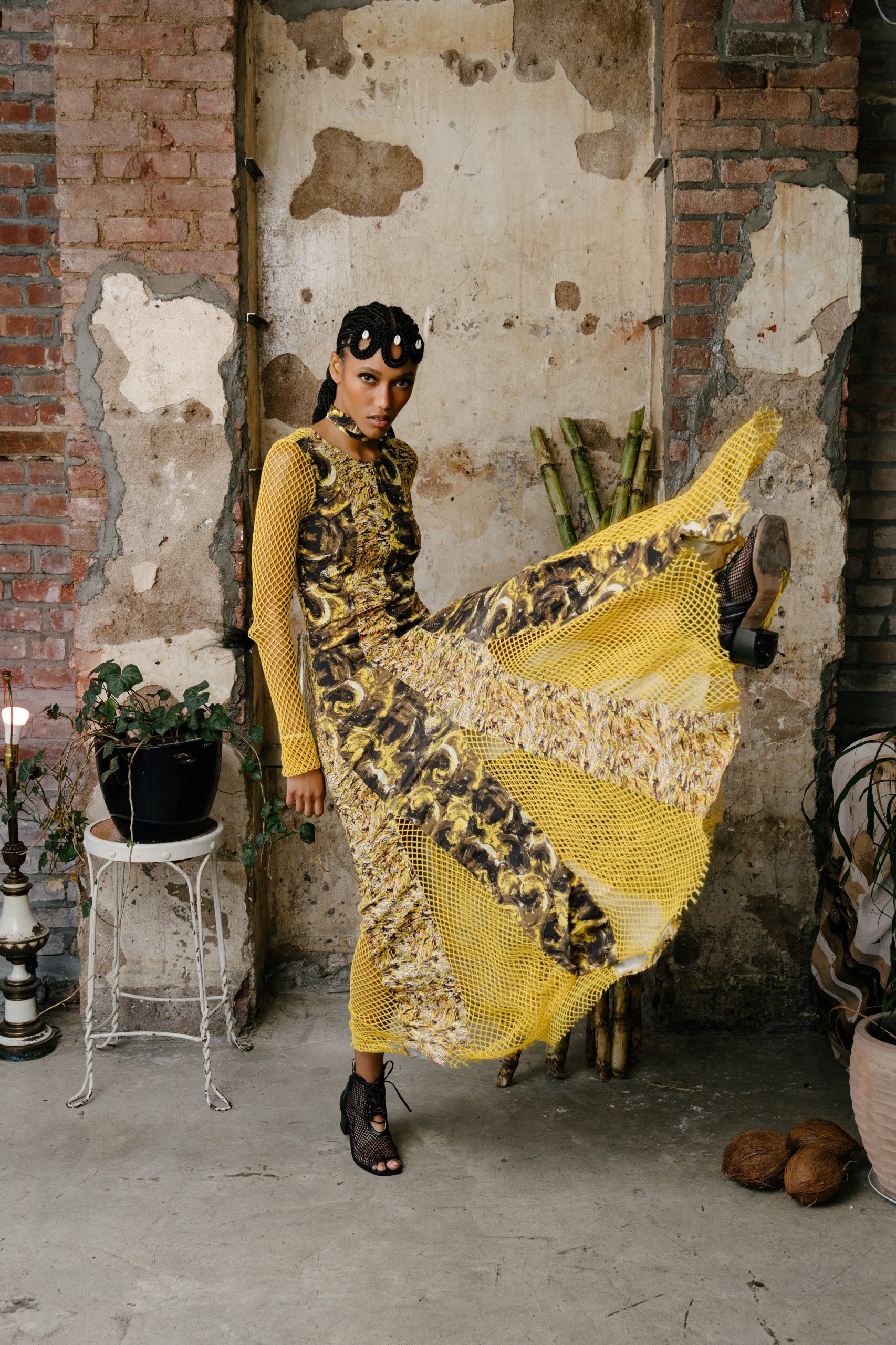
Marrisa Wilson has always had a distinct point of view. At the W Hollywood, she tells me she’s wanted to be a designer since she was quite young. Wilson who founded her label in 2016 in New York City has had a concise plan since she was a second grader.
The eponymous label in Wilson’s words is a unique mix of utilitarianism, sportswear, and artisan craftsmanship. She finds power and beauty in embracing the many aspects that make up the individual, especially in her customers. “My brand is centered around this idea of celebrating the superpower of multicultural women,” she shares.
For this year’s LAFW, Wilson presented her Spring/Summer 2024 collection entitled “Wild Coast.” Many of the pieces are inspired by the Rupununi region in Southern Guyana, her family’s country of origin, and broader themes of Western culture. This southern region, unlike the more commonly thought of as Caribbean terrain, is a desert-like region brimming with rodeo culture. Ruminating on this unique subculture, she mulled over the idea of a Caribbean Cowboy and allowed it to guide the inspiration for her latest line.
“For the ‘Wild Coast’ collection, I wanted to [create a] blend of land and sea,” Wilson explains. Here she begins to speak about this connection throughout her designs. The collection as a whole blends components of her Caribbean heritage with the cowboy archetype. Taking inspiration from the Guyanese method of net fishing, she fashioned a netted dress, with handmade, tropical flower detailing, as if they were native flowers getting “caught” in the fishing nets. She also took the idea of Western fringe, applied her customized print, and cut the fringe into the shape of palm blades.

Pieces in the collection featuring the netting or fringe detail are accompanied by those with her terrain-inspired print designs, either printed directly onto the fabric or woven through jacquard material, offering two detail-rich methods for the prints to be translated. Paneling and multi-pocket designs on her suits point to the utility of Western wear such as stylish storage and gun holsters, while sportswear elements like the under-panel stripe on suit jacket sleeves offer a stronger take on womenswear.
Her creative process is all-encompassing of different creative mediums. Leaning on the connection between audio and visual storytelling, Wilson always begins by creating a playlist that helps anchor her ideas. For her latest, she looked to artists such as Sam Cooke and Otis Redding to envision this soulful archetype and infused reggae. What she landed on were looks with a Calypso vibe that felt like garb fit for outlaw cowboys–each look was created through her lens and worldview.
Her detailed prints, which are all designed and hand-painted by Wilson herself, fabric manipulation, and musical influence, are but a few of many guiding tools used to communicate her story. She believes the artistic process is constantly evolving and wants the message to speak beyond the collection, be it through conversation or any other creative output.
The designer says she enjoys digging into concepts and sources of inspiration. She utilizes different mediums including campaigns and photo shoots to showcase her creativity. For this reason, documenting the legacy of her work is also integral to the creative process. Sketching, taking concepts apart, photographing, recording, coming back to it, piecing it together. She describes how you’ll never know what the final product will be or if you need to return to an idea for another project until you’re in the weeds of it.

With the amount of detail, thought, and creative practicality that goes into every piece, one would almost need to see them in person to gain the full experience. This is, in part, a driving factor for Wilson’s decision to present her designs at LAFW. The designer emphasizes the importance of connecting with her consumer to understand how fashion can be a tool to communicate who they are, and what versions of themselves they are stepping into.
“I think Los Angeles Fashion Week is much more consumer-centric, especially the idea of the marketplace which was appealing because I wanted to replicate that immersive experience that you have when you come to the studio,” Wilson shared.
After experiencing a bit of the fashion circuit in New York, life brought her to Los Angeles. She expresses that the environment is aligned with the creative and personal era she currently finds herself in.
She enjoys Los Angeles for the space and freedom it affords her to create for herself and others on an individual basis, and finds fulfillment in the one-on-one appointments she now takes with her clients. Being hyper-local and understanding her core community on the West Coast is her current priority.
Her by-appointment studio in Venice is this idea of community building in practice. She witnesses how impactful it is for her clients to have these conversations around fashion and self-expression. “We’re in such a weird time in the world right now that I think art is going to be more meaningful and more urgent. No one has time for mediocrity,” she declares.
She has noticed a recurring sentiment, which is, that people want to venture out of the mold they’ve occupied for so long and embrace the multitudes of their personality through style, rather than allowing a singular version of themselves to dictate their closet.

This sentiment aligns well with her brand’s idea of multiculturalism which aims to pinpoint the beauty that sets us all apart, and in turn, embrace the differences together. The amalgamation of each creative element, and aspects of a personality, fold into her belief that solutions can be found through multiculturalism.
The designer also achieves this by bringing a practical meaning to inclusivity. With her design studio, she has developed a cost-neutral practice of altering styles within her collections to best fit her consumers’ bodies comfortably. Wilson describes how these community-rooted connections have influenced her label’s trajectory. She also explains that it has widened the horizon of what could come next for her eponymous label.
“It’s not just about making a new collection. I’m moving away from seasons and I want to start looking at collections as stories, with products that help tell that story,” she tells ESSENCE.







